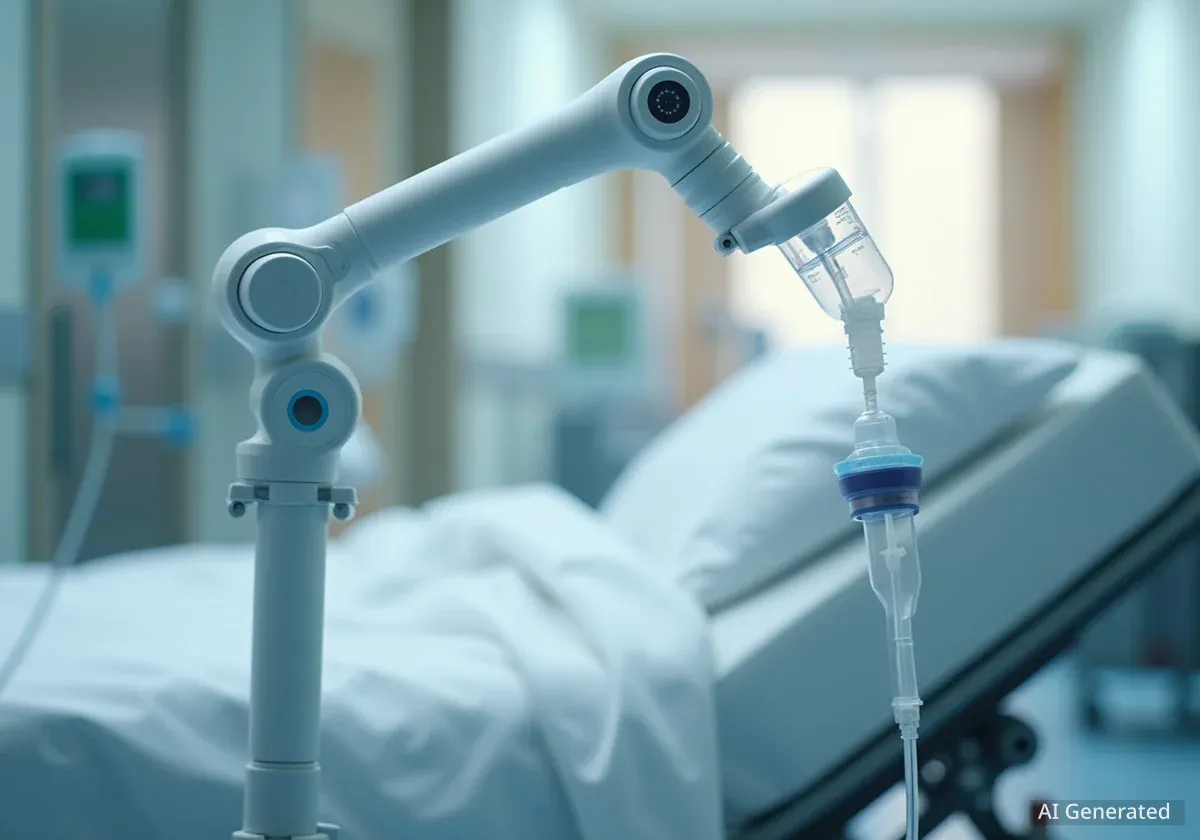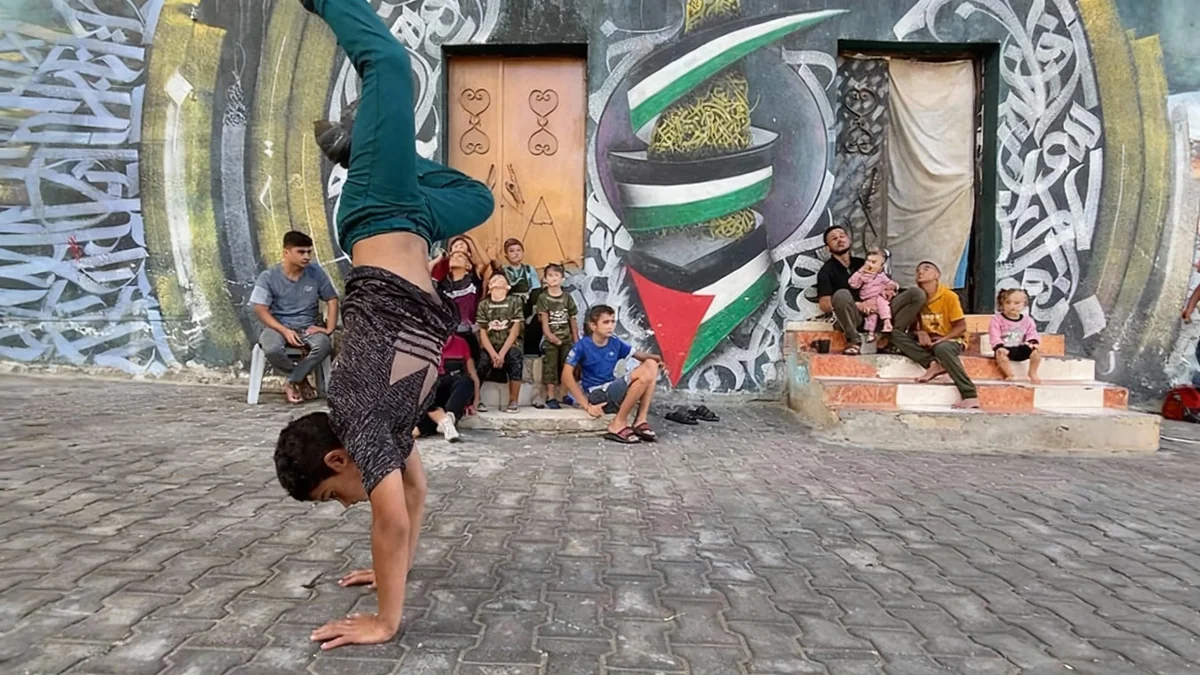The FreeArm is a portable, flexible support device designed to assist with tube feeding and IV infusions. This invention helps caregivers manage medical equipment more easily. It was created by Will and Misti Staley to support their son, Freeman, who faced complex medical challenges. The device aims to provide a practical solution for families navigating similar care needs at home.
Key Takeaways
- The FreeArm is a portable, bendable device for tube feeding and IV infusions.
- It was invented by Will and Misti Staley for their son, Freeman, who had complex medical needs.
- The device addresses the challenge of managing medical equipment while caring for a child.
- After Freeman's passing, the Staleys made the design available to other families.
- Industrial design firm Spanner assisted in refining the device's second version.
Origin of the FreeArm Device
The concept for the FreeArm emerged from a direct need. Misti and Will Staley experienced firsthand the difficulties of providing care for their son, Freeman. Freeman was born with significant medical conditions that required continuous tube feeding and IV infusions. This daily routine presented numerous logistical challenges for the Staleys.
Misti Staley described the situation in an interview with MGA Homecare. She explained the common scenario of trying to feed a child with a gravity syringe while also needing to access other necessities. "You'll be sitting on the couch at home trying to feed your child and hold the gravity syringe at the same time, but then you have to reach over to get the milk," Misti stated. "But maybe you've forgotten the medicines, so you have to walk over to the other side of the kitchen to get them, all while you're still holding your child and the gravity syringe." This common experience highlighted a gap in available support tools for home care.
Fact: Caregiver Challenges
Approximately 53 million adults in the United States provide unpaid care to another adult or child, according to a 2020 report by AARP and the National Alliance for Caregiving. Many of these caregivers assist with complex medical tasks at home.
From Prototype to Market
Motivated by their daily struggles, the Staleys began developing their own solutions. They started by creating prototypes in their garage. These early versions were makeshift but functional, designed to alleviate the burden of constantly holding medical equipment. Their goal was to free up a hand, allowing caregivers to perform other essential tasks or simply provide comfort to their child.
Tragically, Freeman passed away after months of intensive treatments. Despite their profound loss, the Staleys recognized that many other families faced similar caregiving demands. They felt a strong desire to share their invention with others, honoring Freeman's memory by making their design widely accessible. This commitment drove them to pursue commercializing the FreeArm.
"We knew that other families had kids with the same needs as Freeman's, and set out to make their design available to the masses, in Freeman's memory," Misti Staley shared, emphasizing their dedication to helping others.
Refining the FreeArm Design
The Staleys successfully launched a first version of the FreeArm onto the market. This initial release proved the viability and demand for such a device. However, they soon recognized the potential for further improvements and refinement. To enhance the product's functionality, durability, and user experience, they sought external expertise.
They partnered with Spanner, an industrial design consultancy. Spanner is known for its work in product innovation and development. This collaboration aimed to elevate the FreeArm's design, ensuring it met high standards for medical device functionality and user-friendliness. The partnership focused on optimizing the device for practical, everyday use in various home care settings.
Background: Industrial Design's Role
Industrial design firms like Spanner specialize in optimizing products for aesthetics, function, and manufacturability. They play a crucial role in taking an initial concept or an early-stage product and transforming it into a market-ready solution that is both effective and appealing to users.
Impact and Future of the Device
The FreeArm device offers significant benefits for families managing complex medical care. It provides independence and flexibility, allowing caregivers to move more freely while ensuring continuous feeding or infusion. This can reduce physical strain and improve the overall quality of life for both the child and the caregiver.
The device's portability means it can be used in various locations within the home or while traveling. Its bendable nature allows for adaptable positioning, catering to different patient needs and environments. This adaptability is a key feature, making it a versatile tool for diverse medical scenarios.
- Increased Mobility: Caregivers can move around without constantly holding equipment.
- Reduced Strain: Less physical burden on caregivers' arms and hands.
- Enhanced Safety: Securely holds equipment, minimizing accidental spills or disconnections.
- Greater Independence: Children may have more freedom of movement during treatments.
- Versatility: Suitable for various tube feeding and IV infusion setups.
The Staleys' journey from personal struggle to product innovation exemplifies how direct experience can drive meaningful solutions. Their dedication, fueled by Freeman's memory, continues to support other families facing similar challenges. The ongoing development and availability of the FreeArm underscore the importance of practical tools in home healthcare.
The FreeArm's success highlights a growing demand for specialized medical support products for home use. As medical care increasingly shifts from hospitals to home environments, devices that simplify complex tasks become essential. The Staleys' invention is a testament to the power of personal experience in driving innovation that genuinely improves lives.




